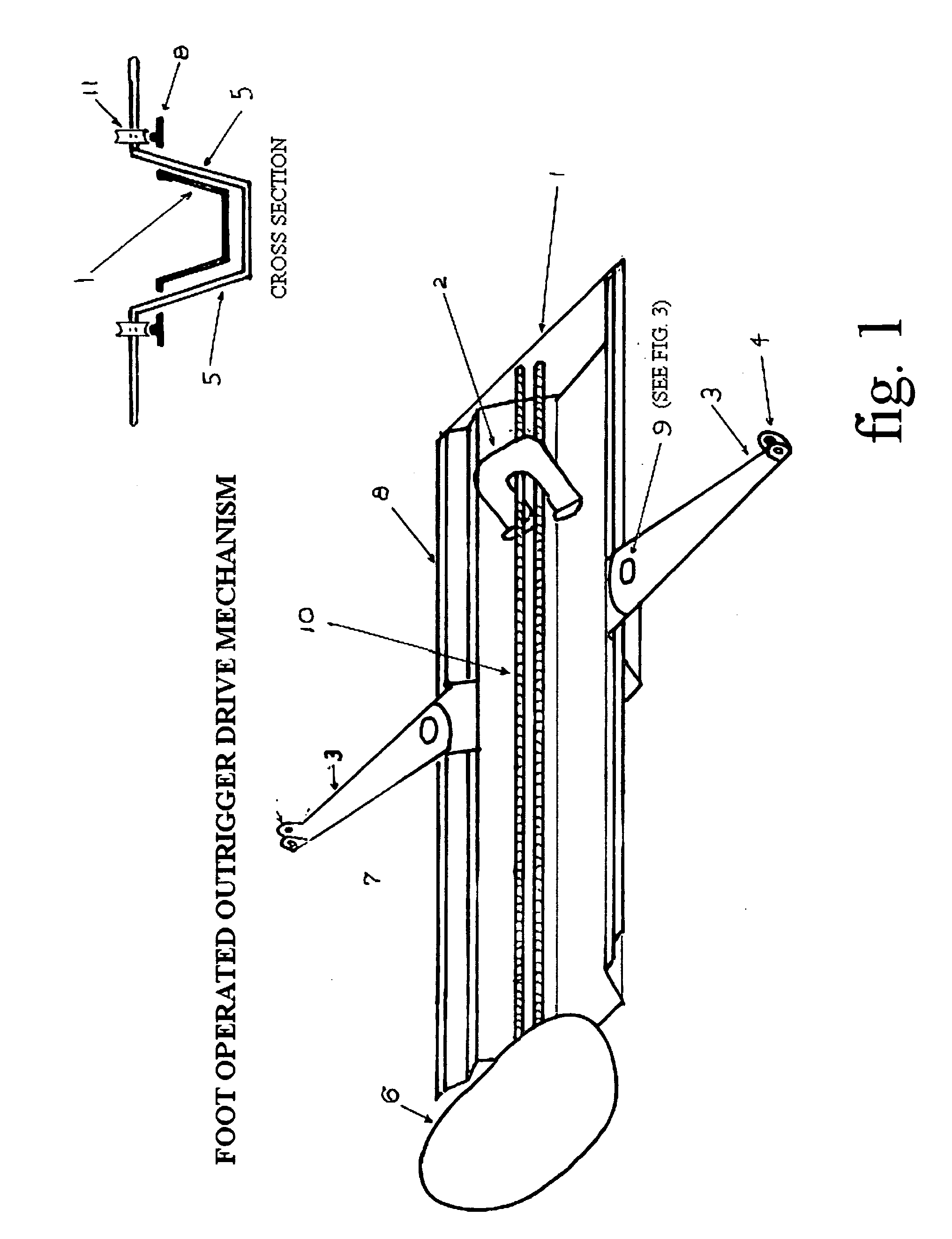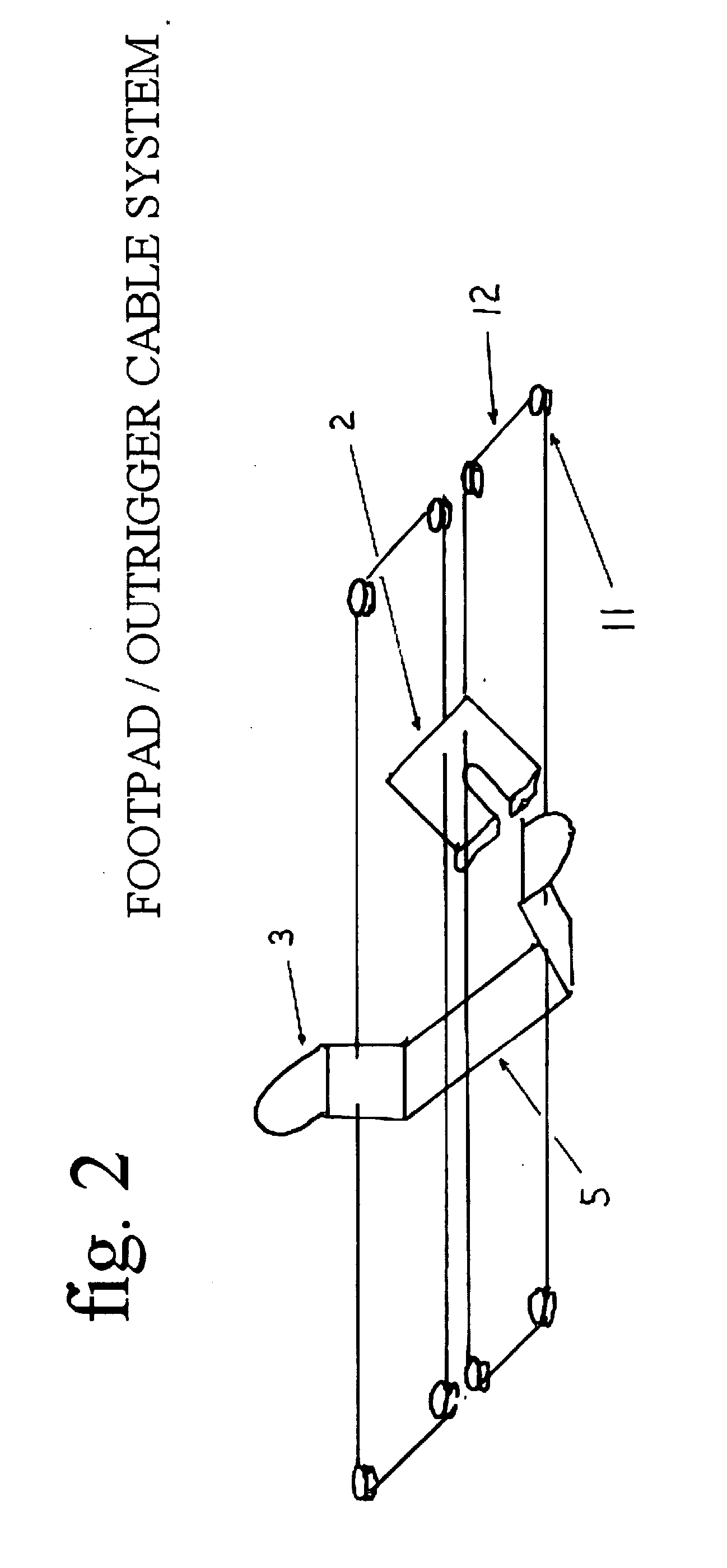Bow-facing rowing system
a rowing system and bow-facing technology, applied in waterborne vessels, marine propulsion, vessel construction, etc., can solve the problems of accelerating, complex and necessarily expensive gear system, and obvious inferiority of the inventions listed above that do not provide feathering, so as to improve the needs of recreational rowers, reduce acceleration, and simple car-top boat
- Summary
- Abstract
- Description
- Claims
- Application Information
AI Technical Summary
Benefits of technology
Problems solved by technology
Method used
Image
Examples
Embodiment Construction
[0035] Bow Facing Rowing System is comprised of the foot operated, outrigger drive mechanism (FIGS. 1 and 2), articulating oars (FIGS. 3 and 4) and self-feathering blade (FIGS. 5 and 6).
[0036] Foot operated, outrigger drive mechanism: A molded cowling 1 provides the framework for said mechanism. Tracks 8 are mounted along the port and starboard gunnels on which the lower member of the outrigger assembly 5 rides. The depth of the cowling is about seven inches and is wide enough for both of the rower's feet to be comfortably positioned side by side on the footpad 2. Between the feet is a rail 10 on which the footpad 2 rides. This footpad uses a system of rails and sheaves for minimum friction. A fixed seat 6 is mounted at the rear of the cowling. The lower member of the outrigger assembly 5 is connected to the footpad 2 with a system of sheaves 11 and cables 12 that cause the outrigger 3 to travel in the opposite direction as the footpad 2. Said cables 12 are mounted outside of the c...
PUM
 Login to View More
Login to View More Abstract
Description
Claims
Application Information
 Login to View More
Login to View More - R&D
- Intellectual Property
- Life Sciences
- Materials
- Tech Scout
- Unparalleled Data Quality
- Higher Quality Content
- 60% Fewer Hallucinations
Browse by: Latest US Patents, China's latest patents, Technical Efficacy Thesaurus, Application Domain, Technology Topic, Popular Technical Reports.
© 2025 PatSnap. All rights reserved.Legal|Privacy policy|Modern Slavery Act Transparency Statement|Sitemap|About US| Contact US: help@patsnap.com



